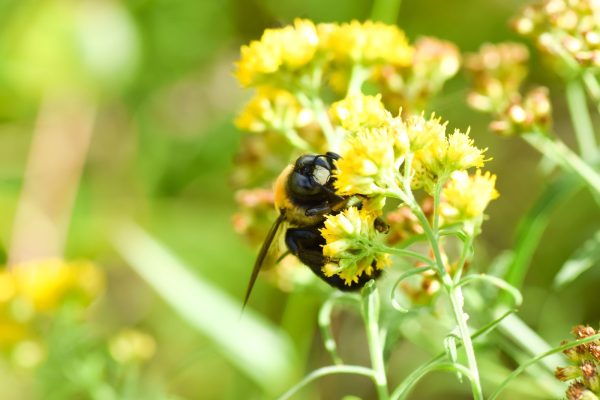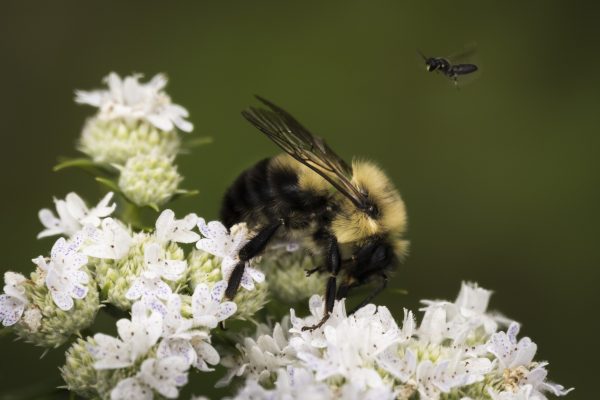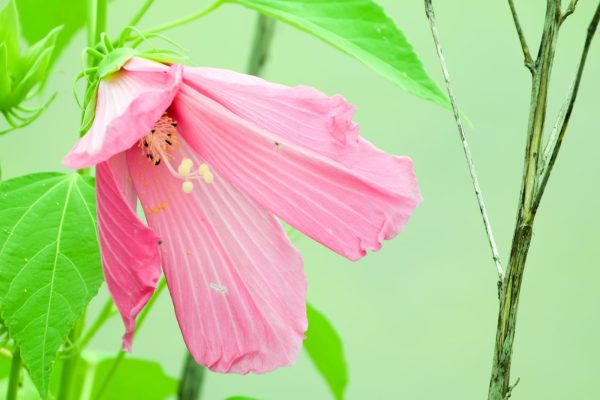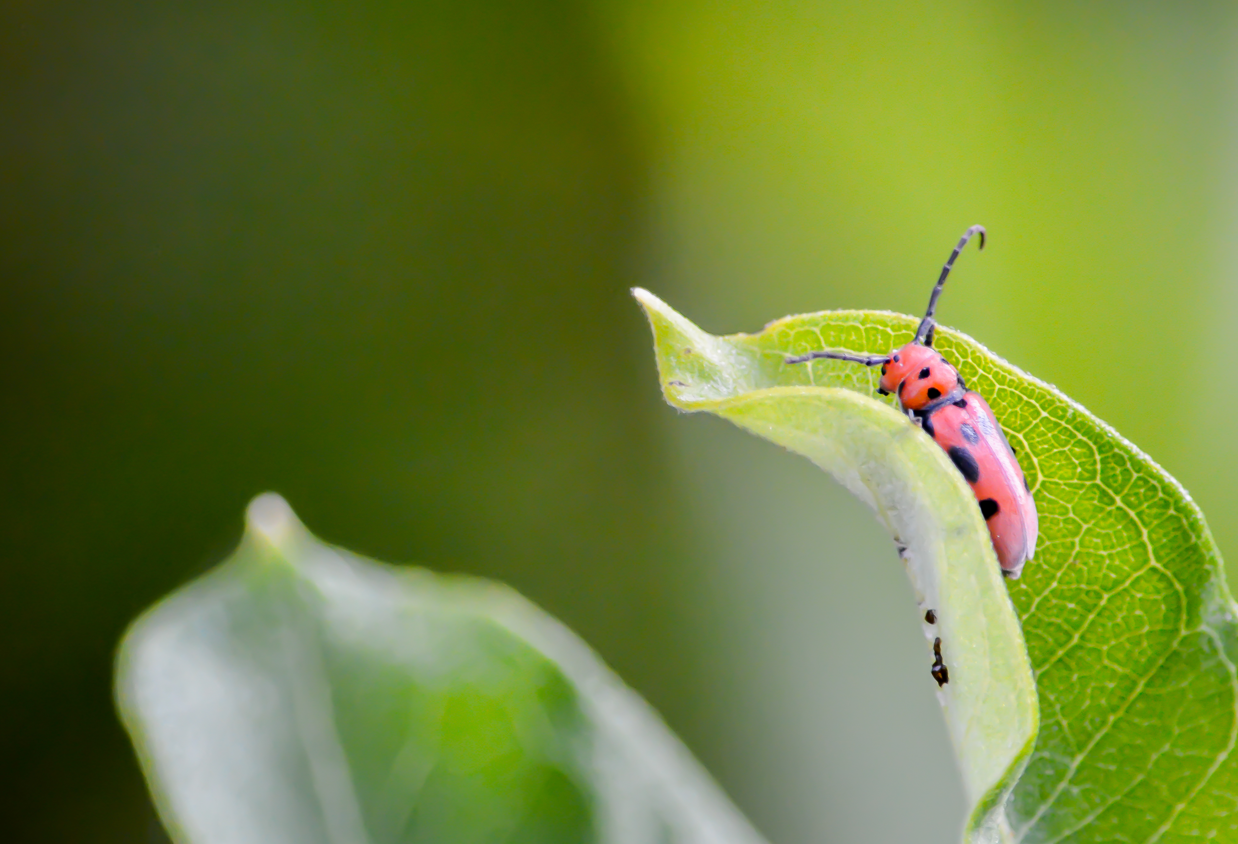A red milkweed beetle.
Most of our pollinators get overlooked for one reason or another. Some are too tiny, simply living out of sight and out of mind, whereas others occur in plain sight but are overshadowed by larger and more charismatic species. Honeybees and monarch butterflies are the rockstars of the pollinator world. The economic importance and social complexity of honeybees and the beauty/increasing rarity of monarchs fuel much of their fanbases. But there are many other insect groups that make the symphony of wild environments sing loud and true. This article hopes to highlight a few of the unsung and underappreciated insect groups that are integral to pollination and the welfare of our natural environments.
Native Bees
It might be surprising to learn that honeybees are a non-native, introduced species. They actually have origins in Europe, but have become widespread and widely popular due to their propensity to pollinate crops and their ability to produce honey. However, the United States is home to thousands of native bee species, and while they don’t produce sugary treats, they are adept pollinators and absolutely vital to the well-being of our ecosystems.

Also surprising (at least to me) is the fact that the majority of our native bee species are solitary. Instead of living in hives, most of our bees live alone in little burrows within the soil, within dead/decaying wood or within hollow herbaceous stems. Hence woody material (dead/dying trees, logs, fallen branches), herbaceous vegetation, and patches of bare soil that we often find on our properties provide excellent habitats for native bees. It might make for a “messier” looking landscape, but keeping some soil patches unseeded and leaving wood to decay where it falls are some great ways to help our bees.

Flies
If insect charisma is a spectrum, and Monarch Butterflies fall on the extremely charismatic side of it, flies (belonging to the Order Diptera) land somewhere near the opposite end. Most people associate flies with less than savory settings, and mosquitoes certainly haven’t helped better their reputation. Regardless of how we feel about flies, they are some of our most important pollinators, and many seek out flowers for the same reasons that native bees do.

Compared to bees, flies tend to be less hairy hence they aren’t as capable of carrying pollen from flower to flower. Nonetheless, untold numbers of plants are pollinated each year by flies, and some groups – like hoverflies – are particularly adept at assisting with pollination. Some visit flowers for protein-rich pollen or tasty nectar, while others are predatory, seeking out unsuspecting prey. In either case, flies assist in the transfer of pollen and consequently the establishment of generations of plants throughout our landscape. Hopefully that aids in their rebrand!
Beetles
The last group I’ll mention is by far the most diverse – beetles comprise more than 350,000 species, and around 30,000 occur here in the U.S. The sheer volume of beetle diversity has resulted in them emerging as some of the most common and important pollinators that we have. Many beetles will visit flowers to consume pollen, carrying some of it with them to new flowers. Others, like ladybugs, visit flowers in search of smaller insects to consume all the while distributing pollen.

Because beetles are a fairly ancient group of insects, they were among the first insects to visit some of the more ancient groups of flowering plants like magnolias. Consequently, many plant and beetle species have been tightly linked for quite some time. Whether entirely or partially reliant on beetles, many of our native plants stand to benefit from beetles visiting their flowers. Luckily for them, we have no shortage of beetles to go around – at least for the time being.
The Conclusion
In summation, there are many insect groups to care about. Honeybees are important for crops, and monarchs are both beautiful and important in their own right. However, there’s an entire world of pollinators who make our world work. The best way to help honeybees, monarchs, and all of the other pollinators, is to increase native plant diversity, leave wild spaces wild, reduce pesticide usage, and help spread the message that there are many insects, whether charismatic or not, whose help we need and vice versa.
Thanks for reading.
Sebastian Harris, Conservation Easement Steward.
